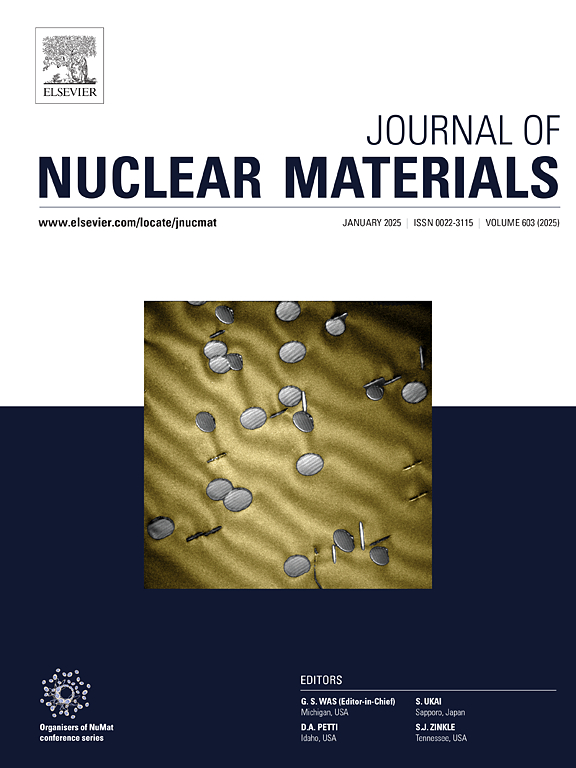Transmission Electron Microscopy Characterization of Fuel Cladding Chemical Interaction between Minor Actinides bearing U-Pu-Zr Fuel and AIM1 Cladding
IF 2.8
2区 工程技术
Q3 MATERIALS SCIENCE, MULTIDISCIPLINARY
引用次数: 0
Abstract
Minor actinides (MA) significantly contribute to the long-term radiotoxicity of spent nuclear fuel (SNF). Separating MA from SNF and incorporating it into metallic fuels for fast reactor transmutation is a potential method to reduce this radiotoxicity. This study focuses on transmission electron microscopy characterization of two samples from the fuel cladding chemical interaction (FCCI) region of an americium (Am) and neptunium (Np)-bearing (MA-bearing) uranium-plutonium-zirconium (U-Pu-Zr) fuel irradiated in the Phenix fast reactor to 9.5 % FIMA burnup at approximately 550 °C cladding temperature. The results show that despite the complex chemical interactions between MA and AIM1 cladding elements, excessive FCCI was not induced, and Am penetration depth in the cladding limited to less than 4 μm. Np remained mostly inside fuel. The Zr-rich compounds layer effectively limited the accumulation of lanthanide on the inner cladding surface. Overall, the FCCI behavior between investigated MA-bearing U-Pu-Zr fuel and AIM1 cladding is benign.
求助全文
约1分钟内获得全文
求助全文
来源期刊

Journal of Nuclear Materials
工程技术-材料科学:综合
CiteScore
5.70
自引率
25.80%
发文量
601
审稿时长
63 days
期刊介绍:
The Journal of Nuclear Materials publishes high quality papers in materials research for nuclear applications, primarily fission reactors, fusion reactors, and similar environments including radiation areas of charged particle accelerators. Both original research and critical review papers covering experimental, theoretical, and computational aspects of either fundamental or applied nature are welcome.
The breadth of the field is such that a wide range of processes and properties in the field of materials science and engineering is of interest to the readership, spanning atom-scale processes, microstructures, thermodynamics, mechanical properties, physical properties, and corrosion, for example.
Topics covered by JNM
Fission reactor materials, including fuels, cladding, core structures, pressure vessels, coolant interactions with materials, moderator and control components, fission product behavior.
Materials aspects of the entire fuel cycle.
Materials aspects of the actinides and their compounds.
Performance of nuclear waste materials; materials aspects of the immobilization of wastes.
Fusion reactor materials, including first walls, blankets, insulators and magnets.
Neutron and charged particle radiation effects in materials, including defects, transmutations, microstructures, phase changes and macroscopic properties.
Interaction of plasmas, ion beams, electron beams and electromagnetic radiation with materials relevant to nuclear systems.
 求助内容:
求助内容: 应助结果提醒方式:
应助结果提醒方式:


